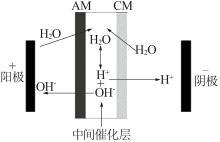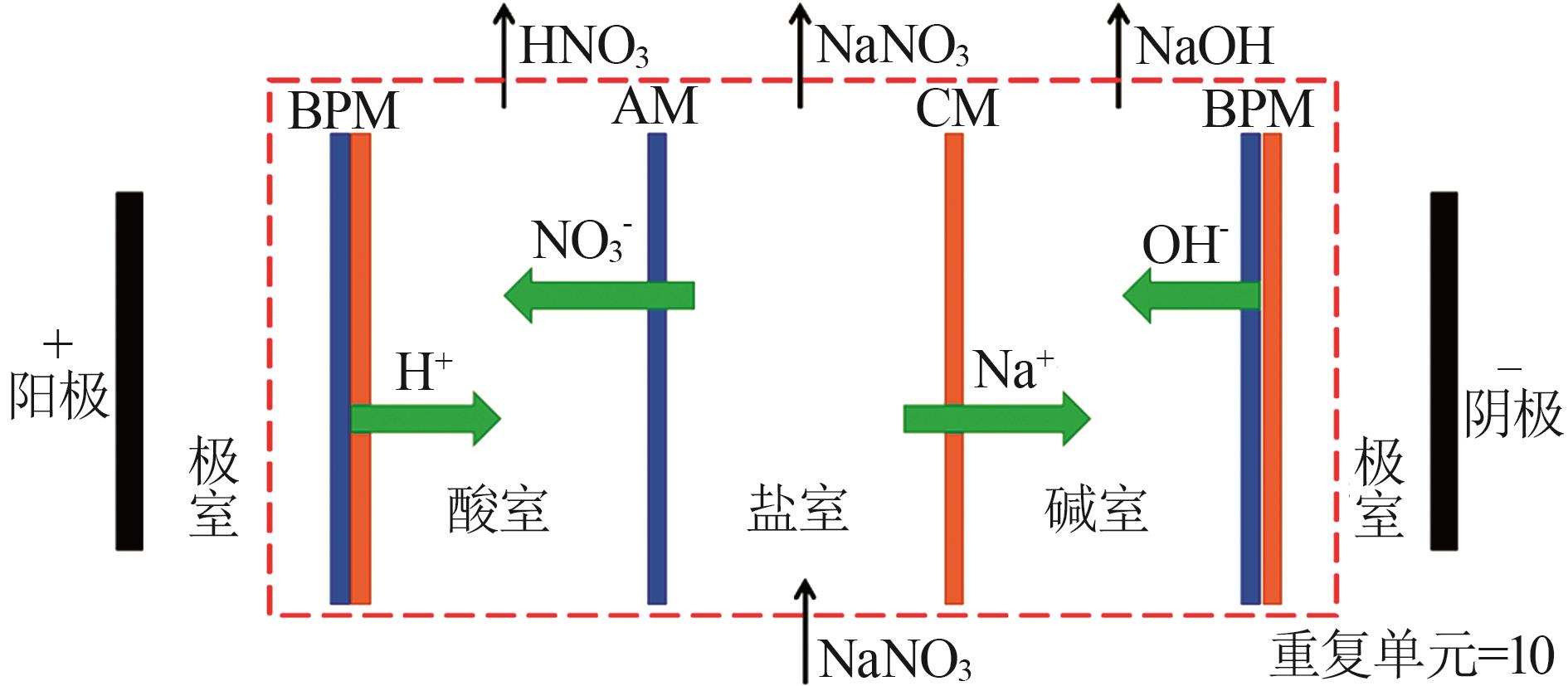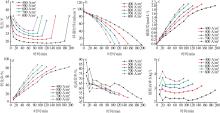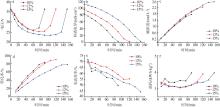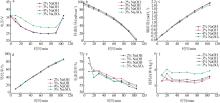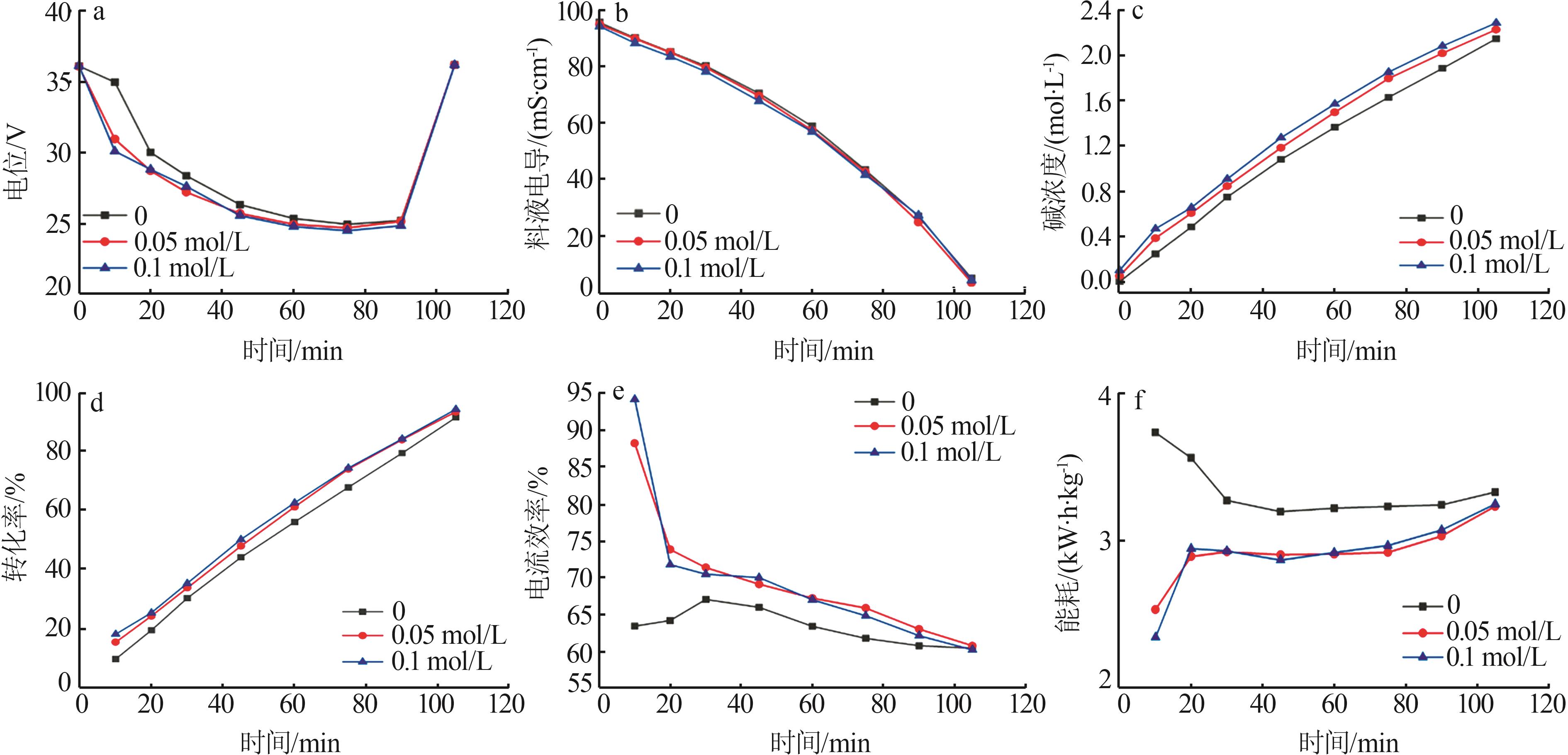| 1 |
PÄRNAMÄE R, MAREEV S, NIKONENKO V,et al.Bipolar membranes:A review on principles,latest developments,and applications[J].Journal of Membrane Science,2021,617:118538.
|
| 2 |
孙文文,唐元晖,张春晖,等.双极膜电渗析技术的研究进展[J].工业水处理,2021,41(5):36-41.
|
|
SUN Wenwen, TANG Yuanhui, ZHANG Chunhui,et al.Research progress of bipolar membrane electrodialysis technology[J].Industrial Water Treatment,2021,41(5):36-41.
|
| 3 |
ZHAO Di, XU Jinyun, SUN Yu,et al.Composition and structure progress of the catalytic interface layer for bipolar membrane[J].Nanomaterials,2022,12(16):2874.
|
| 4 |
CHEN Tianyi, BI Jingtao, JI Zhiyong,et al.Application of bipolar membrane electrodialysis for simultaneous recovery of high⁃value acid/alkali from saline wastewater:An in⁃depth review[J].Water Research,2022,226:119274.
|
| 5 |
杨浩然,王炳煌,郑煜铭,等.双极膜电渗析处理工业高盐废水的研究现状[J].膜科学与技术,2022,42(4):148-156.
|
|
YANG Haoran, WANG Binghuang, ZHENG Yuming,et al.Review on the research status of bipolar membrane electrodialysis toward the treatment of hyperhaline industrial wastewater[J].Membrane Science and Technology,2022,42(4):148-156.
|
| 6 |
张伟.电渗析与双极膜电渗析对浓海水综合利用的工艺研究[D].杭州:浙江工业大学,2017.
|
|
ZHANG Wei.Study of valorization of seawater concentrate via electrodialysis and bipolar membrane electrodialysis[D].Hangzhou:Zhejiang University of Technology,2017.
|
| 7 |
张生富.硝酸钠生产工艺及研究进展概述[J].盐科学与化工,2019,48(10):5-7.
|
|
ZHANG Shengfu.Overview of production technology and research progress of sodium nitrate[J].Journal of Salt Science and Chemical Industry,2019,48(10):5-7.
|
| 8 |
庄永,陈龙,曾志佳,等.超高压反渗透处理高浓度硝酸根废水的应用[J].广东化工,2019,46(23):87-90.
|
|
ZHUANG Yong, CHEN Long, ZENG Zhijia,et al.Development of ultra⁃high pressure reverse osmosis treatment of high concentration nitrate wastewater[J].Guangdong Chemical Industry,2019,46(23):87-90.
|
| 9 |
李国强.多效蒸发结晶在硝酸钠废水处理中的应用[J].化工管理,2015(3):201.
|
|
LI Guoqiang.Application of multi⁃effect evaporation crystallization in sodium nitrate wastewater treatment[J].Chemical Enterprise Management,2015(3):201.
|
| 10 |
张治磊,张盼,郭锡伟,等.均相膜电渗析技术在硝酸钠废水处理中的应用研究[J].盐科学与化工,2021,50(5):27- 31.
|
|
ZHANG Zhilei, ZHANG Pan, GUO Xiwei,et al.Application of homogeneous membrane electrodialysis technology in the treatment of sodium nitrate wastewater[J].Journal of Salt Science and Chemical Industry,2021,50(5):27-31.
|
| 11 |
关卫国.硝酸生产中氨氧化率的影响因素研究[J].中国石油和化工标准与质量,2017,37(7):79-80.
|
|
GUAN Weiguo.Study on influencing factors of ammonia oxidation rate in nitric acid production[J].China Petroleum and Che⁃mical Standard and Quality,2017,37(7):79-80.
|
| 12 |
韩玉臻.硝酸生产中氨氧化率的影响因素研究[J].化工设计通讯,2019,45(11):2,13.
|
|
HAN Yuzhen.Study on the influencing factors of ammonia oxidation rate in nitric acid production[J].Chemical Engineering Design Communications,2019,45(11):2,13.
|
| 13 |
SONG K, CHAE S C, BANG J H.Separation of sodium hydroxide from post⁃carbonation brines by bipolar membrane electrodialysis(BMED)[J].Chemical Engineering Journal,2021,423:130179.
|
| 14 |
LIU Yaru, CHEN Yiyang, ZHUANG Qi,et al.Recent advances in MOFs-based proton exchange membranes[J].Coordination Che⁃ mistry Reviews,2022,471:214740.
|
| 15 |
FU Lili, GAO Xueli, YANG Yang,et al.Preparation of succinic acid using bipolar membrane electrodialysis[J].Separation and Purification Technology,2014,127:212-218.
|
| 16 |
YAO Jiachao, YANG Lu, YE Zhiping,et al.Process optimization of industrial waste salts separated into acid/base for the realization of resource utilization by bipolar membrane electrodialy⁃sis[J].Desalination and Water Treatment,2019,172:377-385.
|
| 17 |
WANG Huangying, YAN Junying, SONG Wanjie,et al.Ion exchange membrane related processes towards carbon capture,utilization and storage:Current trends and perspectives[J].Separation and Purification Technology,2022,296:121390.
|
| 18 |
WANG Liang, LI Zhenxing, XU Zhaozan,et al.Proton blockage membrane with tertiary amine groups for concentration of sulfonic acid in electrodialysis[J].Journal of Membrane Science,2018,555:78-87.
|
 ), LI Hao2(
), LI Hao2( ), LIU Guochang2, XU Shoujiang3, WANG Haitao4, LI Guocai3, CHANG Na1(
), LIU Guochang2, XU Shoujiang3, WANG Haitao4, LI Guocai3, CHANG Na1( )
)
